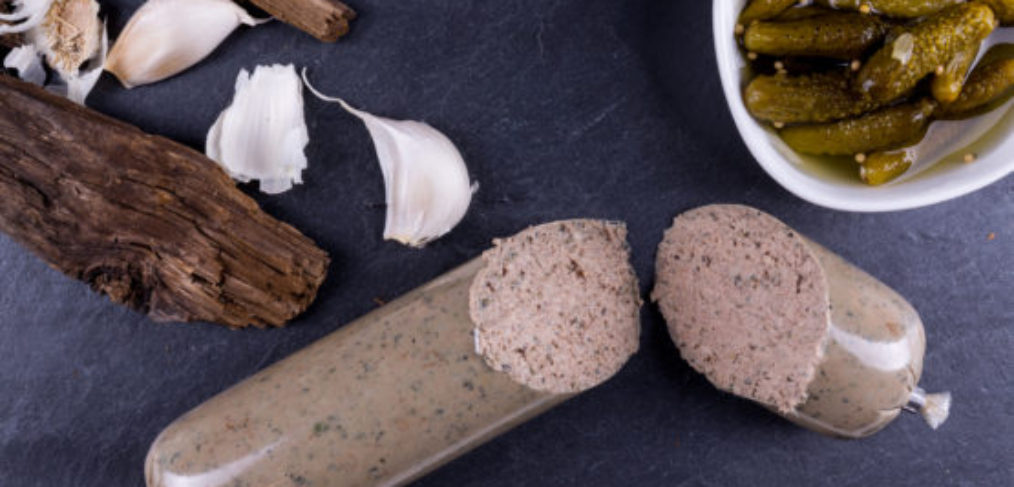A Most Palatable Way to Eat Those Healthy Organ Meats

Let’s just call a spade a spade: yes, we’re taking about eating guts.
Does the idea of eating guts gross you out?
Don’t worry, you’re not alone.
But just because you’re in the same boat as many others, don’t let that be a reason to keep your protein options limited to that old stand-bys of boneless, skinless chicken breast, egg whites and grass – fed filet mignon.
Not that there’s any problem with eating the three protein options listed above, so long as they’re all properly sourced from humane providers, they can all be part of your protein repertoire.
But if you’re still stuck in that old-school, low-fat mentality, you’re limiting yourself in the nutrient density of your foods.
The path to optimal health starts with a foundation of eating a diet based on real foods that are comprised of a plethora of seasonal plants (mostly veggies) that grow locally, a vast array of naturally occurring fats and moderate portions of mindfully sourced proteins.
Below are five important reasons why including organ meats in your weekly routine is good for you and good for the planet!
- Organ Meats are particularly rich in B-vitamins, such as vitamin B12 and folate. They are also rich in minerals, including iron, magnesium, selenium and zinc, and important fat-soluble vitamins like vitamins A, D, E and K. Furthermore, organ meats are an excellent protein source (1).
- People excluding fattier cuts of naturally sourced meats and fat in general in favor of eating high quantities of carbohydrates, (such as those in breads and rice) had a nearly 30% higher risk of dying during a study published in the Lance than people eating a low-carb diet, while people eating high-fat diets had a 23% lower chance of dying during the study’s seven years of follow-up compared to people who ate less fat (2).
- When properly managed, raising animals on pasture instead of factory farms is a net benefit to the environment. To begin with, a diet of grazed grass requires much less fossil fuel than a feedlot diet of dried corn and soy. On pasture, grazing animals do their own fertilizing and harvesting. The ground is covered with greens all year round, so it does an excellent job of harvesting solar energy and holding on to top soil and moisture. Grazed pasture removes carbon dioxide from the atmosphere more effectively than any land use, including forestland and ungrazed prairie, helping to slow global warming (3).
- Having fertility issues? Once again, organ meats are part of the path to addressing this all-too common health concern for many women. Ounce for ounce, liver is one of the most nutrient-dense foods on the planet. It’s loaded with fat soluble vitamins like retinol (pre-formed vitamin A) that are crucial for reproductive health, and difficult to obtain elsewhere in the diet. Liver is also a great source of highly absorbable iron, which helps prevent miscarriage and maternal anemia, and B12, which is required for proper formation of red blood cells and DNA. Liver is also a good source of bioavailable protein, zinc, and folate (4).
- Cost efficiency. Why waste anything, especially when we’re sourcing from an animal who has died? As with the way we are ideally eating based on the most authentic human approach to diet, if we emulate our ancestors, we’re more economical in today’s world where we have, unlike said ancestors, money as part of our system. They were extremely efficient, eating animals and fish from nose to tail, leaving nothing wasted. We can and should emulate this approach, not only because it ensures balanced nutrition, but also because it’s more economical (5).
By the way, if you’ve ever had a hot dog, bologna or sausage, chances are quite high you’ve already not only eaten guts, but other far more questionable items, for reference.
So just how much organ meats should we be eating?
Simply incorporating it into your weekly arsenal of other protein / fat options is the most balanced way to go, rather than trying to rigidly adhere to arbitrary directives such as ‘eat red meat only once per month’.
For example, on a day when you’re incorporating intermittent fasting, if that’s part of your weekly routine, you might have liverwurst along side a large plate of organic rapini sautéed with garlic and coconut oil finished with lime for lunch and wild caught black cod, pan seared, served on a bed of spinach, topped with olive oil, avocado, shredded seaweed and fresh avocado for dinner. On this mock day, you’d be getting a variety of fresh veg, varied fat types and sources and moderate protein, all to create a nice balance of macronutrients.
Remember, an authentic approach to eating isn’t high protein at all; it’s high in plants!
And what about all the nonsense about avoiding animal products because they cause high cholesterol or an increased risk for disease?
Here’s where sourcing is absolutely crucial.
The meat and organ meat you’d get if you were to procure them from conventional sources is, indeed, harmful for you as well as for the environment. Couple that with an erroneous attempt to ‘be Paleo’ vis a vis eating tons of this inhumanely sourced protein, and it’s an easy path to dis ease.
Keep it local as much as possible, and, equally as important, keep it natural.
Companies such as US Wellness Meats are founded on these very principles which raise animals mindfully and consequently, offer environmentally friendly, human and animal friendly products.
I eat meat. I have recovered from my days of being vegan, some 20 years ago. I am still plant based, and I still love animals, and wholly support their mindful treatment.
None of these statements are exclusive of one another.
(1) https://www.healthline.com/nutrition/organ-meats
(2) http://time.com/4919448/low-fat-v-low-carb-diets/
(3) http://www.eatwild.com/environment.html
(4) https://www.marksdailyapple.com/5-primal-superfoods-for-fertility-and-pregnancy/
(5) https://thepaleodiet.com/tag/organ-meat/





